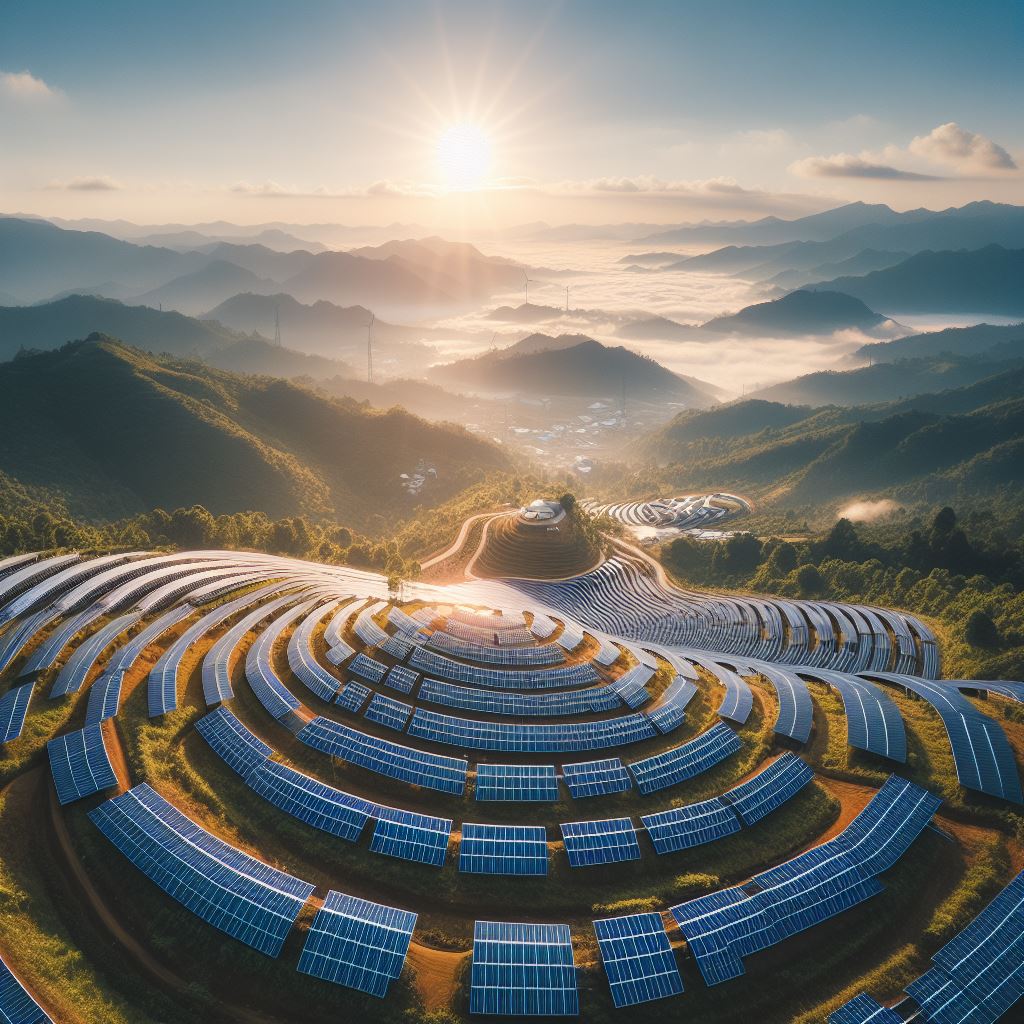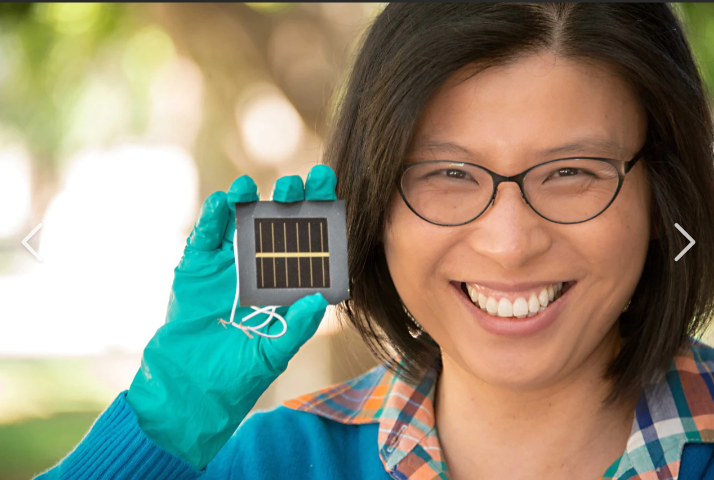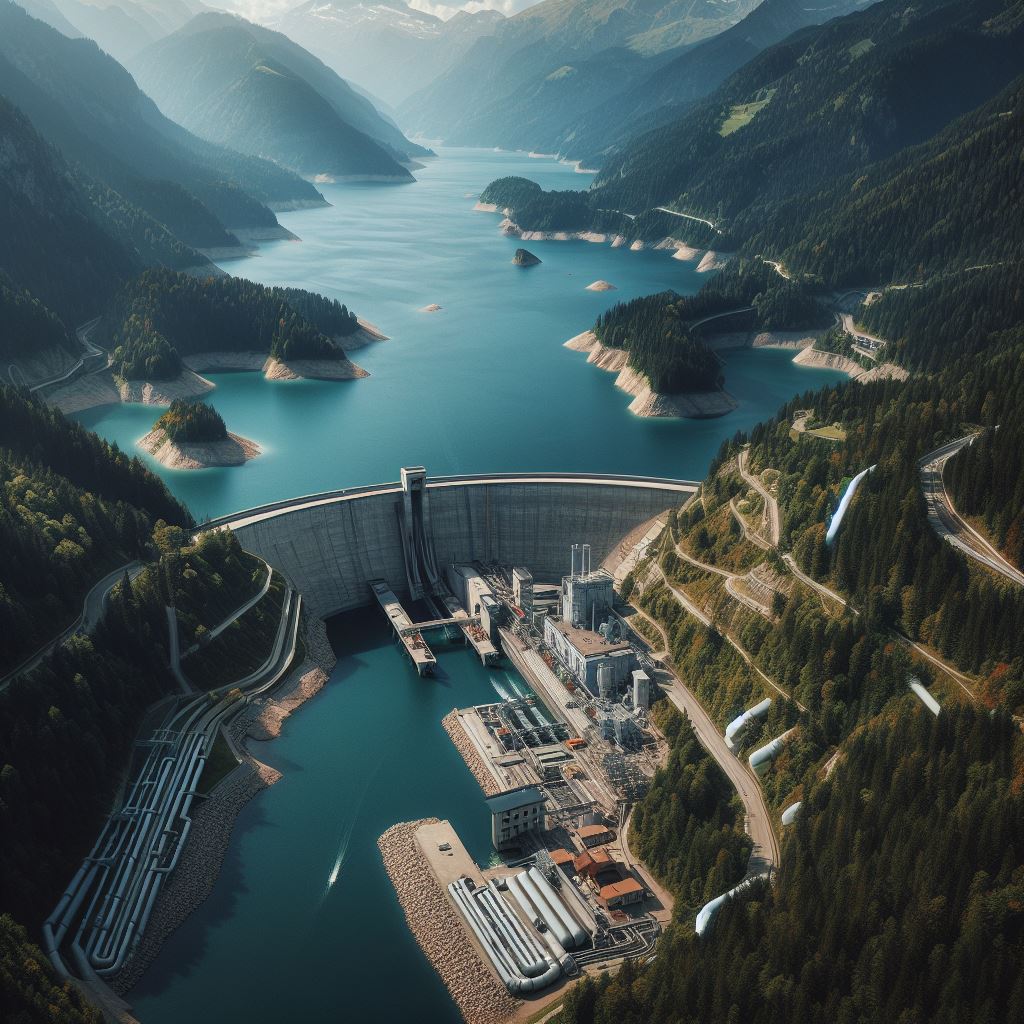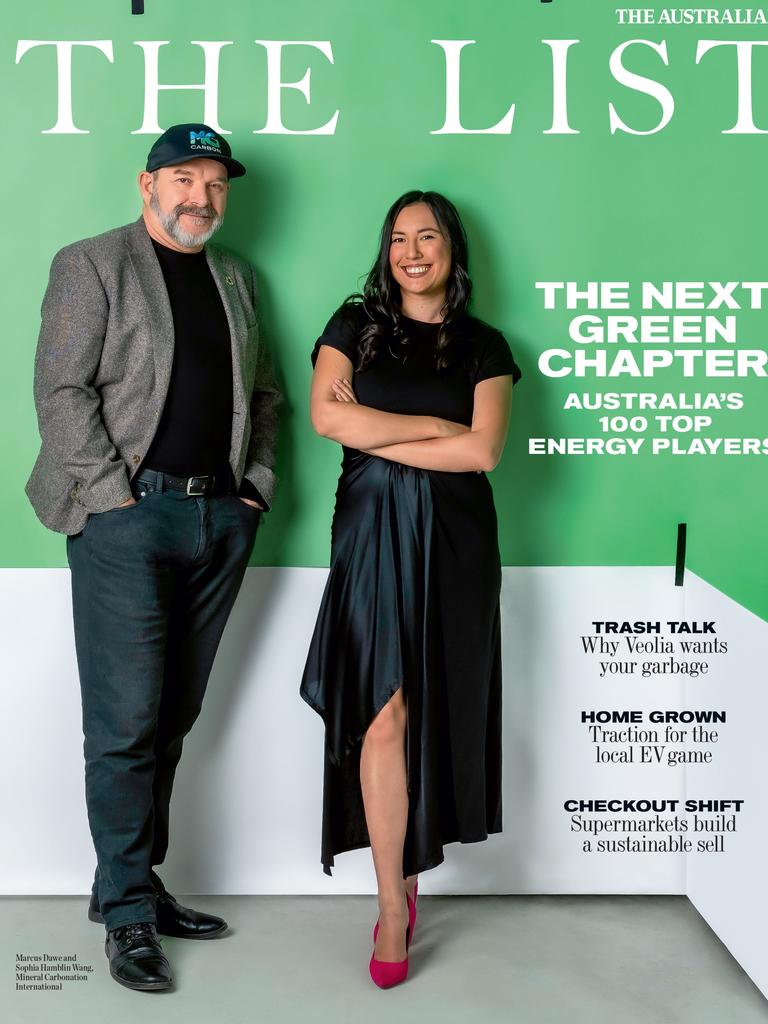My renewables feature was published in The Australian on November 20, 2023 in the Green List series.
See here for more stories in that series.
A goal of 82 percent renewable power by 2030 has become part of the Albanese Government’s climate target rhetoric. The Australian Energy Council says 16 Terawatt hours of solar and wind facilities will need to be built to achieve this target but cites a figure of 8.5TWh as current deployment.
Increasing the output of renewables isn’t simple. There’s manufacturing challenges, the need to build larger scale solar and wind farms including offshore, long government approval timeframes and adapting the power grid to bring renewable energy to cities.
But newer technologies are on the way. Solar installation costs should drop further with panels that better utilise the sun’s light. Wind turbines are becoming more capable of operating in stormier conditions.
Offshore wind farms with dramatically boost renewable supply. More pumped hydro is planned for network storage with large scale batteries nearer to consumers.
Nuclear fission power plants are banned in Australia, and not part of any strategy to reach net-zero, while nuclear fusion advocates see their technology not in use until later this century.
WIND

Offshore wind farms are the next big renewables development coming to Australia. They will supply the energy needs of millions of households.
The federal government is only now beginning the licensing process. In April around 20 companies applied for a seven-year feasibility licence to research building wind farms in the first declared wind zone in Bass Strait, about 10km from the Victorian coastline between Wilsons Promontory and Lakes Entrance. Eventually 40-year commercial licences will be issued to allow building to begin.
These wind farms will be massive. Albert Quon, Head of Market Development for the Australian arm of Danish firm Ørsted, says the company proposes two clusters each of around 100 wind turbines that together will generate about 5.6 Gigawatts of electricity, enough to power 4 million homes.
Companies have already conducted studies to monitor the speed of wind over time, the depth of water and the status of the seabed, but commercial operation is years away.
“These projects take a lot of time, so you’re looking at the early 2030s,” Mr Quon says. “It really depends on how quickly the government moves in terms of permits. It could happen as early as 2030.”
He says the project would generate about 6,000 jobs during the development, construction and operation.
The Federal Government has declared additional offshore wind zones in the Hunter Valley-Illawarra region of NSW, in Northern Tasmania, at Portland, Victoria and in the Perth and Bunbury regions of Western Australia.
Shiaohuey Chow, Senior Lecturer in Geotechnical Engineering, University of Melbourne, says offshore wind farms produce about 1.7 times more energy than onshore ones due to more consistent windier conditions.
She says offshore wind is a mature technology in Europe, but new to Australia. There is the challenge of the sea bed not being as hard as in Europe. “You need to anchor the wind farm down to this problematic sea bed,” she says, adding there is the concern of offshore wind farms interfering with marine life.
Dutch firm Tourchwind is challenging the long construction time for offshore wind with a more readily installable single blade floating turbine system that also promises higher energy yields.
The rollout of land-based wind farms continues with reports in June that wind had achieved a record output of 30 percent energy on the country’s main transmission grid. The wind generation industry is pitching to achieve 50 percent by 2030.
Turbines are being redesigned to be more efficient through improvements in direct-drive generators and to be more capable of generating power even in high winds.
Research is under way to use artificial intelligence to predict turbine maintenance, and thereby reduce downtime and increase the power yield.
SOLAR

Anita Ho-Baillie is bullish about solar panels generating more electricity than now. The University of Sydney John Hooke Chair of Nanoscience and her team have been working with “metal halide perovskites” that absorb higher energy light more efficiently than silicon.
“A typical perovskite solar cell will be around one micrometre, and a piece of human hair is around 100 micrometres,” she explains. Needing only small amounts of perovskites should reduce costs.
With traditional silicon panels, some of the orange, yellow, green, blue, violet and ultraviolet light is absorbed as heat and the energy is wasted. Different perovskite compounds can turn different parts of the spectrum into power, she says.
The project aims to boost the conversion rate of solar energy into electricity well beyond a theoretical maximum of 29 per cent to about 40 per cent.

Making such a scheme commercially viable has issues: the stability and durability of perovskites has to improve and the rollout is a race against time. “We would like these technologies to be commercialised in five years’ time.”
Professor Ho-Baillie and her team are working in partnership with solar technology company SunDrive, a Mike Cannon-Brookes backed start-up that achieved success in replacing silver in solar cells with cheaper copper.
Glenn Platt, Professor of Practice at the university’s School of Electrical and Information sees bringing cost down as key, and cites improvements in manufacturing as the way ahead, rather than more spectacular technologies around efficiency.
“Additional efficiency … is really at the point of diminishing returns and has been for a long time,” he said. “The real question is, what’s the cost of the electricity that comes out of those solar panels because efficiency is only really relevant if you’re worried about how much space you have for a solar panel.”
He sees a roughly 10-fold cost reduction of solar in 10 years as a major step forward. He says laboratories are looking at cutting the glass on the front of panels to one-tenth the current thickness to bring down costs further. “It’s not a dramatic change in material science or how we build solar cells,” Professor Platt says.
Making panels easier to join without impacting performance would also reduce installation costs. Shorter warehousing times and reducing government approval delays would all help speed increase the take-up.
PUMPED HYDRO STORAGE

Pumped hydro is predicted to become the dominant storage option for energy in Australia and the world. The International Hydropower Association says it already stores more than 15 per cent of the world’s electricity.
A pumped hydro scheme comprises two reservoirs of water, one set away and below the other. During the day when demand is low, excess solar power pumps water from the bottom to the top reservoir. At peak demand times, the release of water from the top reservoir drives a turbine and generates power.
Andrew Blakers, Emeritus Professor of Engineering at Australian National University, says 98 percent of renewable energy storage globally is pumped hydro, with batteries and everything else comprising just two per cent.
“In Australia, we’ve got three operating pumped hydro systems, one in Queensland and two in New South Wales. We’ve got two under construction – Snowy 2.0 in New South Wales and Kidston in North Queensland, and we’ve got another dozen under serious consideration.
“We need a lot more transmission, a lot more batteries, and a lot more hydro.”
Pumped hydro isn’t confined to mountainous terrain. The association says two reservoirs the size of two Olympic swimming pools with a 500 metre height difference will suffice. It documented more than 600,000 pumped hydro greenfield sites globally in 2021.
An ANU audit in 2017 found 22,000 potential pumped hydro sites locally, many of them river-based.
BATTERY STORAGE
Batteries are a more flexible option for shorter-term grid storage. They can be linked in anywhere, can stabilise supply and provide short term backup power during blackouts.
“For batteries to be cost effective, you can’t have them sitting there doing nothing all day,” says University of Sydney Professor of Chemistry Thomas Maschmeyer.

Lithium-ion batteries have been the mainstay, but manufacturers have been trialling batteries made using a range of substances.
China, which dominates the production of lithium-ion batteries, appears also set to dominate the coming wave of sodium-ion batteries which are cheaper and safer, but their lower storage density means they are suited to ground energy storage rather than EVs.
Solid state batteries look a good proposition for EVs being light, safe and capable of fast charging, but remain expensive.
Zinc-ion, lithium-sulphur, and cobalt-free batteries are among other technologies being developed, with lithium iron phosphate batteries already used extensively in China for EVs.
NUCLEAR
Nuclear power plants are banned in Australia, and not part of any strategy to reach net-zero, however they are used significantly internationally.

The World Nuclear Association says there are 436 operating nuclear power plants globally, with 60 under construction and 321 more proposed, 154 of them in China.
Commercial implementation of the other form of nuclear energy, fusion, remains decades away. Fusion is similar to the nuclear reaction that takes place on the sun.
University of NSW senior lecturer Patrick Burr heads a project to build a small fusion device for educational use by UNSW academics. He says commercialisation is at least 15 years away, but is buoyed by the growing private investment in fusion technology and believes it will contribute as an energy source later this century.
Published in The Australian Newspaper, November 20, 2023.
